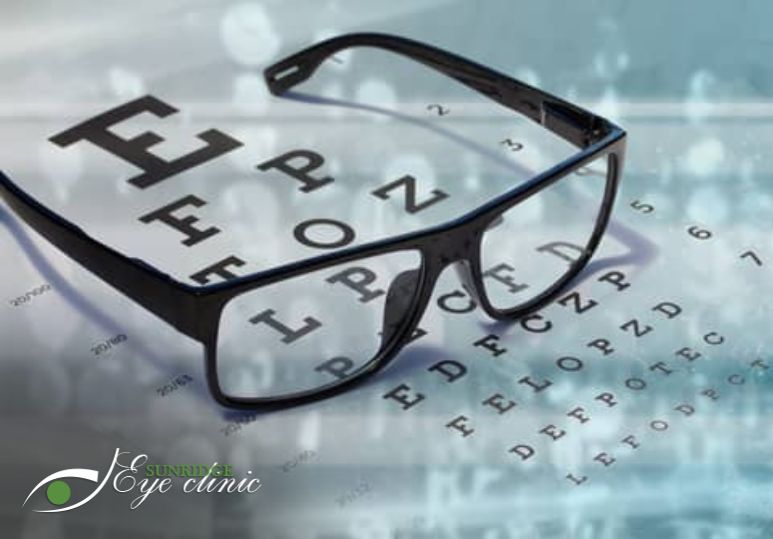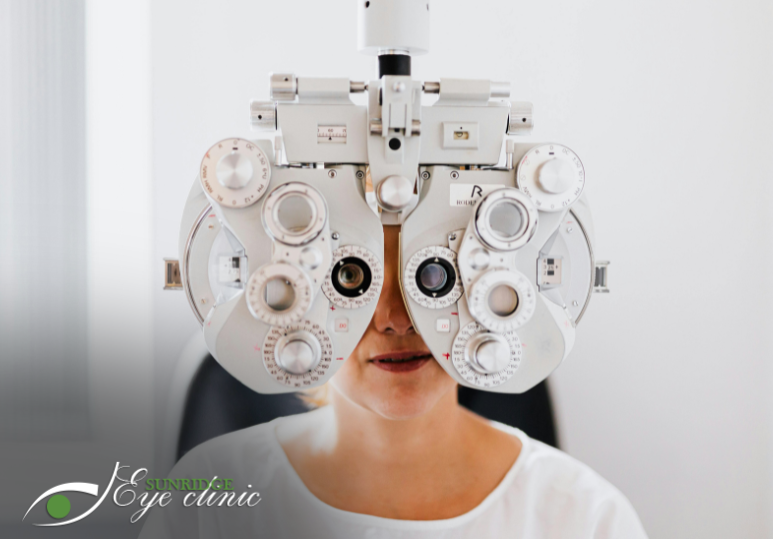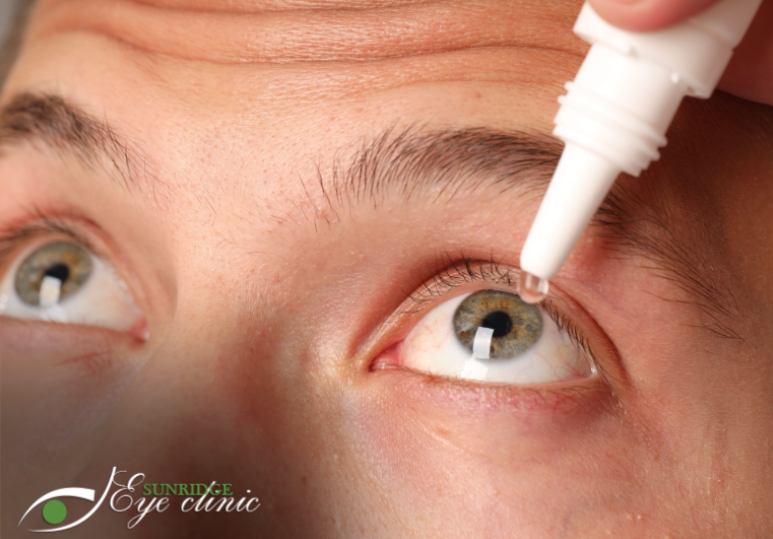10 Unexpected Health Conditions That Can Be Detected During
Comprehensive Eye Exams
1. Diabetes
Diabetes can actually affect the eyes and cause an eye condition called diabetic retinopathy. Too much sugar in the blood can affect the small and delicate blood vessels within the retina, causing blockages. When the retinal blood vessels are blocked, the eye begins to grow new, abnormal blood vessels that can leak and cause damage to the eye. If your optometrist sees new, abnormal blood vessels, this can inform patients that they may have developed diabetes and need to visit their family doctor. Learn more by reading How Diabetes Affects Your Eye Health.
2. High Blood Pressure
Hypertensive retinopathy occurs when a person has high blood pressure. Similar to diabetic retinopathy, hypertensive retinopathy also damages the blood vessels in the eyes. The force of blood against the walls of these delicate blood vessels can cause the blood vessels to narrow or otherwise become damaged.
3. High Cholesterol
High cholesterol can lead to serious heart problems as cholesterol attaches inside the blood vessels and blocks blood flow. This condition can develop without your knowledge and it increases the risk of heart disease and stroke. Your optometrist may be able to detect some signs of high cholesterol development during an eye exam. Optometrists may notice a blue or yellow ring around the cornea or they may see cholesterol deposits in the retinal blood vessels.
4. Stroke And Heart Attacks
Your eyes are highly indicative of heart health. Signs related to high blood pressure and high cholesterol can also be related to your risk of stroke, heart disease, and heart attacks. Your eyes can also serve as a warning to you, as some vision symptoms such as sudden blind spots and a curtain-like sheet across the vision can indicate serious heart-health problems.
5. Brain Tumour
When a brain tumour develops, it can swell and create pressure inside the brain. This can sometimes be seen at the back of the eye during an eye exam. Optometrists can also tell if there is excess pressure on the optic nerve signaling the development of a brain tumour.
6. Cancer
Optometrists aren’t able to identify all forms of cancer from an eye exam, but there are several forms related to the eye that they can detect. The most obvious cancer detection is cancer of the eye, such as retinoblastoma, but there are other cancers detectable from the eye. The eyelid can sometimes show optometrists signs of skin cancer and the blood and blood vessels within the eye and eyelid can be indicative of cancer of the blood. Other forms of cancer, typically within the head and neck, can also spread to the eye.
7. Rheumatoid Arthritis
Red eyes, severe eye pain, and an inflamed sclera (the white section of the eye) are all common symptoms of rheumatoid arthritis. Dry eyes are a common symptom of rheumatoid arthritis as well. Your optometrist can identify this condition while helping you manage these symptoms.
8. Thyroid Disease
When the thyroid gland produces either too much or too little hormone, it can make the eyes protrude or the eyelids retract. Your optometrist will be able to see and measure any changes that can indicate thyroid disease.
9. Multiple Sclerosis (MS)
An inflamed optic nerve, blurred vision, painful eye movement, double vision, and any combination of these symptoms can be caused by this degenerative nervous system disease.
10. Sexually Transmitted Diseases
Many different forms of sexually transmitted diseases can be detected by an optometrist when they look into your eye. Various sexually transmitted diseases can affect different layers of the eye.
Monitor Both Your Eye Health And General Health With Eye Exams
Eye exams are an important part of healthcare. Eye exams can help make you aware of any underlying health conditions as well as any developing eye conditions that can impact vision and eye health. At Sunridge Eye Clinic in NE Calgary, our staff is committed to the health of all patients. From infants to seniors, our eye exams are designed to help you and your family stay informed about your health while learning how to care for and prevent various eye conditions. To schedule an eye exam, contact Sunridge Eye Clinic at 1-403-280-7518 or fill out the online contact form.
FAQ
Q: How long is a comprehensive eye exam?
A: A comprehensive eye exam will last anywhere from 30 minutes to an hour depending on the tests performed by your optometrist.
Q: What should I do to prepare for an eye exam?
A: Before you go for an eye exam, you may want to:
- Write down any questions you want to ask your optometrist, including any issues you may be experiencing.
- List any pertinent family medical history, allergies, and any medications you are currently taking.
- Bring your eyeglasses or contact lens prescription with you (if you have one) so your optometrist can analyze it.
- Enquire about which eye tests you’ll undergo, so you’ll be well prepared and calm.
- Plan your day accordingly. An eye exam can take up to 1 hour.
To learn more about comprehensive eye exams, read What To Expect From A Routine Eye Exam.
Q: Is an eye exam the only way to tell if I have these conditions?
A: No, there are many medical tests as well as various signs and symptoms of all of the health issues listed here. Your lifestyle choices and family health history also indicate if you are at an increased risk of developing certain health conditions. Eye exams are one way that can help identify health problems, but you may also want to ensure you go for regular checkups with your family doctor.






